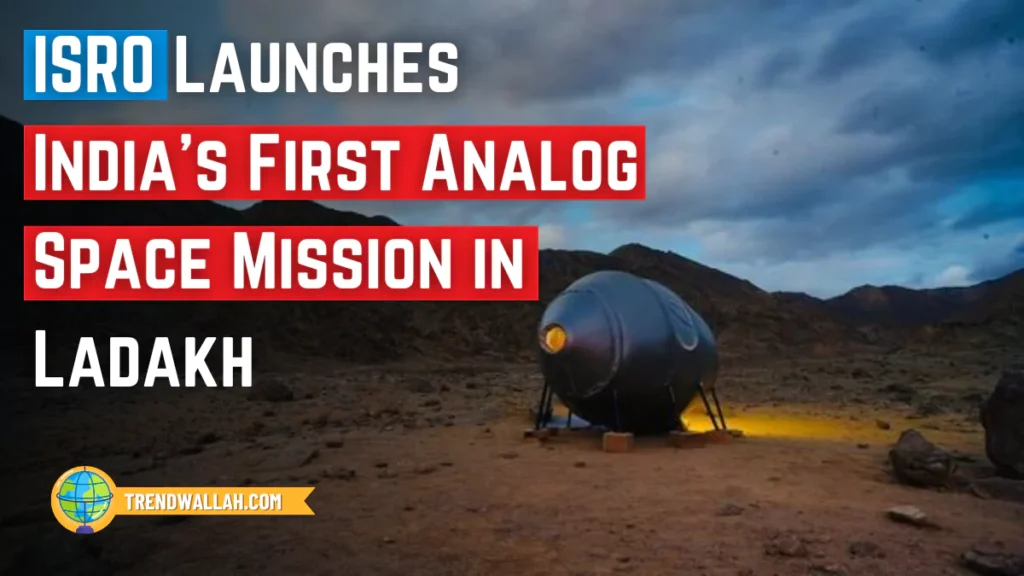
India’s space agency, ISRO, has launched India’s first analog space mission in Leh, Ladakh. This mission aims to replicate life in a space habitat, helping India prepare for future Moon and Mars explorations. The analog mission will focus on testing life-support systems and habitat sustainability in conditions similar to those on other planets.
Mission Overview
| Feature | Details |
| Why in the News? | ISRO’s first analog mission in Ladakh |
| Launch Date | November 1, 2024 |
| Goal | Simulating Mars/Moon conditions |
| ISRO Chairman | S. Somnath |
| Mission Support | Ladakh Autonomous Hill Development Council |
| Temperature Range | Summer: 3–35°C, Winter: −20 to −35°C |
| Jurisdiction | Department of Space |
Mission Highlights
Launch Date: November 1, 2024
Primary Location: Leh, Ladakh
Objective: To simulate space habitat conditions for future interplanetary missions
Mission Partners
- Human Spaceflight Centre, ISRO
- AAKA Space Studio
- University of Ladakh
- IIT Bombay
- Supported by Ladakh Autonomous Hill Development Council
Key Objectives of ISRO’s Analog Space Mission
- Simulating Extreme Conditions: The mission uses Ladakh’s unique high-altitude, low-oxygen environment to test conditions similar to Mars and the Moon.
- Testing Space Habitat Hab-1: This inflatable habitat includes essentials like hydroponics for food, a compact kitchen, and sanitation facilities, providing data on living conditions for long-duration missions.
- Replicating Astronaut Challenges: The mission seeks to simulate challenges like isolation, temperature extremes, and oxygen scarcity, aiding in astronaut training for future missions.
Importance of Analog Space Missions
Analog missions are crucial for space research as they test technologies in conditions similar to space, without the high costs and risks of actual space travel. This mission aims to assess life-support systems, habitat sustainability, and astronaut adaptability to space-like conditions.
India’s First Analog Space Mission – Summary
- ISRO launched its first analog space mission in Leh, Ladakh.
- Mission date: November 1, 2024, aims to simulate Mars/Moon-like conditions.
- Ladakh’s terrain and climate offer low oxygen and temperature extremes, ideal for testing.
- Collaboration with universities and research bodies helps gather essential data.
- Objective: Prepare for future Moon and Mars missions through habitat testing.
Also Read Latest Current Affairs 2024
FAQs on India’s First Analog Space Mission
The mission aims to simulate conditions of space habitats to prepare for future missions to the Moon and Mars
Ladakh’s high altitude, low oxygen, and barren landscape resemble Martian and lunar environments, making it suitable for testing.
Hab-1 has essentials like hydroponics, a kitchen, and sanitation, providing a self-sustaining environment for research.
The mission is a joint effort by ISRO’s Human Spaceflight Centre, AAKA Space Studio, the University of Ladakh, and IIT Bombay
ISRO, with its innovative missions, aims to explore space sustainably and cost-effectively, targeting Moon and Mars missions.
